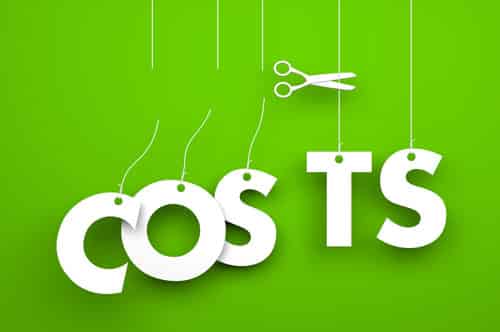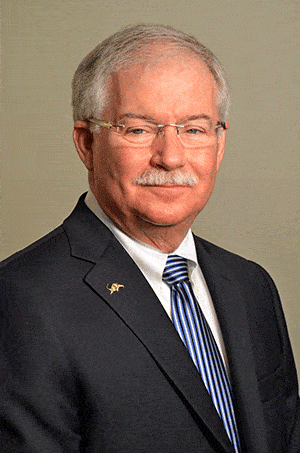
Now more than ever is the time for leaders to evaluate selling costs. Distributors must ask the following questions:
- What is the difference between a sale and a transaction?
- Is our current sales system reflecting how customers are actually buying product?
- Are costly resources being wasted with outside field reps ultimately performing customer service tasks instead of initiating new business?
It may be uncomfortable at first to challenge long-held beliefs. For instance, some distributors worry that if a field sales rep is removed from a territory, that volume will disappear. But our research shows that around 90% of sales to existing customers are repurchases rather than new sales. Data-driven insights like these can lead to thoughtful cost-cutting redesigns like replacing generalist sales reps with positions more suited to what the customer really values to save big money down the road – while maintaining or even improving customer service.
Leadership Drives Transformation
Remember, academic research runs about five to 10 years behind what you are currently doing. The pandemic has incited five years of digital transformation in a matter of months, only widening the gap between the leaders who have been innovating and those who haven’t. The most successful distributors in this moment are able to:
- Analyze big data: Detail-oriented leadership actively fights for clean data to make sure it’s usable for guiding transformation processes to cut sales costs. For instance, segmenting customer data can help reveal customers who do not need the economic investment of a field sales rep, leading to a more productive territory design.
- Effectively implement change: Leaders who have been using project management tools in transforming business process design for years are well positioned to face the kinds of exponential changes happening today. Those who have responded by hoping that those market changes are linear are facing a severe uphill battle of playing catch up.
Lifestyle leaders often choose to take the path later while professional managers know the journey to building these skills is long, but that it’s well worth the payoff.
4 Ways to Reduce Sales Costs
Ultimately, earning a higher financial return than your competitors comes down to two things: price advantage or cost advantage or both. While the wholesale distribution market rarely has control of setting prices, the landscape is wide open for building a strong competitive advantage by reducing selling costs without sacrificing service. Here are four strategic levers successful distributors use to lower sales costs:
Role Specialization
Customers are never going to confess their problems to a website, just as field sales reps should not spend valuable hours tracking orders and writing quotes. That’s why it’s important for distributors to break down existing sales jobs into their component pieces and determine if the right people are doing the right activities.
Role specialization ensures that the most specialized professionals only work on high-value tasks. Nuanced work with the highest return, like developing new business, is assigned to the highest-paid team members like sales reps. Specialization groups lower-value activities like managing quotes with appropriately-trained staff who are positioned to fulfill those tasks quickly. Redesigning for specialization is a process, but it’s the first and most impactful change distributors can make to increase sales efficiency and reduce costs.
Digitize Artisan Processes
Unique imperfections are great for artists handcrafting pottery, but not for sales processes. Gone are the days of transcribing customer orders from a fax or a phone call. With so many automated tools available, sales labor costs can be greatly reduced by investing in inexpensive digital solutions. Digital sales tools are also more responsive, consistent and reliable.
Separate Market-Making Activities from Market-Serving Activities
Providing excellent service to current customers should not interfere with creating new ones. Market-serving activities protect revenue streams with customers by managing a frictionless customer service experience. These involve a predictable flow of less-specialized tasks like managing returns or providing information. This allows distributors to pull these activities out and group them together with less costly resources like an outbound telemarketing group, digital customer service tools, or even creating a hybrid inside/outside team of salespeople.
Market-making activities require specialization to effectively displace competitors or increase distributors’ share of customers’ wallets. Keeping market-making activities separate frees up more expensive workers like field sales reps to initiate, build and expand relationships with customers. Too often, field salespeople become involved in managing recurring transactions instead of passing these market-serving activities off to inside salespeople.
Create a Clear Value Proposition
Traditional value propositions are changing. In the past, salespeople have been the value proposition, relying on the “sell myself first” angle. But analyzing the gap between what distributors think they’re selling and what customers are actually buying reveals opportunities to pull customers into a stronger relationship with their distributor, not just their salesperson.
For example, arming salespeople with unique support tools like services or subscriptions can strengthen a customer’s connection to their distributor. This lets salespeople get out of transactional activities and into helping customers solve problems and creating recurring revenue streams. Salespeople are still critical. But in shifting the value proposition off salespeople’s shoulders, those reps can work on expanding the number of relationships between the customer and the distributor, eventually becoming a secondary contact as the business itself becomes the draw.
Increasing sales efficiency does not happen overnight; it often involves turnover and learning curves for new systems and digitized processes. It means relearning customer segmentation and making tough choices to create stickier value propositions. But effective distributors know how to wield their data to guide cost-cutting transformations. And great leaders can clarify the benefits by leading their teams toward maximizing profits in an exponentially changing market.

